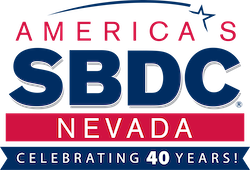Small Business Innovation Research (SBIR) & Small Business Technology Transfer (STTR) Program
The federal SBIR program was created in 1982 to stimulate technological innovation, use small business to meet federal R&D needs, and increase private sector commercialization derived from federal R&D. The federal STTR Program, established in 1992, is modeled on the SBIR program and similar objectives. It also serves to encourage technology transfer through cooperative research between small business concerns and non-profit research institutions.
SBIR.gov
Refer to this site for all SIR agency links, coverage of SBIR news, upcoming seminars and
conferences, comprehensive solicitation searches and more.
THE PHASES OF THE SBIR AND STTR PROGRAMS
After each participating federal agency receives SBIR and STTR proposals that address its solicitation topics, the agency then awards SBIR contracts and/or grants to businesses based on these proposals. When a business receives an award, they begin a three-phase
process:
Phase I
- The purpose of Phase I is to evaluate scientific and technical merit and determine the feasibility of a technology idea.
- The duration of Phase I is 6 months for SBIR and 12 months for STTR.
- The award amount in Phase I can be up to $250,000.
Phase II
- Phase II is usually assumed to be the prototype development phase expanding the results of Phase I.
- Phase II awards are awarded to the Phase I projects that are most promising.
- A business must enter Phase II through Phase I. They cannot skip Phase I.
- The duration of Phase II is approximately 24 months.
- The award amount for SBIR is up to $750,000 and for STTR is $15 million.
Phase III
- The purpose of Phase III is to commercialize the technology created during Phase I and Phase II.
- Generally, there are no SBIR/STTR funds for research and development under Phase III. Phase III requires the use of private (venture capitol investments, loans, angel investments, other company investment, etc.) or non-SBIR/non-STTR government funds.
- Several agencies have implemented programs to strength the ability of companies that received grants to commercialize their innovations.
ELIGIBILITY TO PARTICIPATE IN THE SBIR AND STTR PROGRAMS
A. To be eligible to submit proposals to receive an SBIR or STTR grants or contracts, a business must:
- Have no more than 500 employees (including employees of affiliates) at the time of
the award (see 13 code of Federal Regulation 121 for rules determining number of employees); - Be organized for profit;
- Be located in the United States;
- Be at least 51% owned and controlled by an individual(s) who is (are) a citizen(s) of
the United States or lawfully admitted permanent residents.
A business can be in the form of a sole proprietor, partnership, corporation, joint venture, association, trust, or cooperative.
B. A participating research institute, in the case of the STTR program, must be:
- a contractor-operated, federal-funded research and development centers;
- non-profit research institutions; and/or
- non-profit colleges or universities.
QUESTIONS BUSINESS SHOULD ASK THEMSELVES TO DETERMINE IF THE SBIR AND/OR STTR PROGRAMS ARE RIGHT FOR THEIR BUSINESS:
Outlined below are some questions a business or individuals should consider prior to committing to the SBIR or STTR proposal process:
- Does the proposed project fit with your company’s vision and business plan?
- Are you prepared to devote the necessary time and resources to prepare a proposal to apply for Phase I SBIR or STTR funding?
- Is your technology idea responsive to the technical topic and/or the mission of a federal agency?
- What problem does your technology address?
- How innovative is the proposed technology? Is this a new solution to a problem?
- How does your technology differ from approaches taken by others?
- Do you have the “best” team to perform the work? Do you need consultants or additional technical assistance?
- Is your work plan complete? Have you developed specific tasks to be performed to meet the project’s objective?
- Do you have the necessary equipment and/or space to complete the project?
- Do you have a pathway to commercialization?
- Are you willing to assess your company’s strengths and weaknesses?
Applying for SBIR and/or STTR funding, and then, completing the work should you receive a grant or contract, takes time, talent and financial resources. Careful consideration of the above questions are critical.
USEFUL SBIR AND STTR-RELATED SITES:
In addition to the participating agency websites, the following are useful sites to explore:
U.S. Small Business Administration
http://www.sba.gov/sbir/
-
- In addition to good information regarding SBIR and STTR,
-
- this site contains a Proposal Writing handbook
National SBIR Program Resource Center
http://www.zyn.com/sbir/sbres/sbcss1.htm
- Use this site to search for SBIR solicitation topics
Project SBIR West Homepage
http://www.sbir.dsu.edu/
- This is a good site with information on writing a SBIR proposal, including an SBIR Sample Proposal section.
National Institute of Health site
http://www.nhlbi.nih.gov/funding/sbir/index.htm
- This site also has a successful proposal sample.
